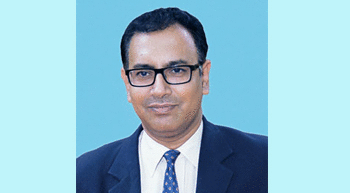A major part of the sewage generated in Indian cities is discharged untreated into water bodies. Such unwise loss of water can have serious impacts. Wastewater management is thus assuming a pivotal role.
With an annual per capita water availability of less than 1700 cubic metres, India is facing the brunt of water scarcity. Rising population and industrial activity is expected to increase water need by nearly 40 per cent as India´s water demand rises from the current 750 to 1050 billion cubic metres by the year 2025. This is likely to bring the per capita water availability to less than 1000 cubic metres, making India a water-scarce nation like the Middle East. Water reuse and recycle is the only tenable solution to this problem.
SUCCESSFUL WASTEWATER MANAGEMENT
India´s largest cities generate about 38,254 litres of sewage everyday. Over 70 per cent of the same is discharged into rivers and other water bodies without any treatment. This does not include sewage produced in informal settlements and in smaller towns, where the network and treatment infrastructure may be lacking. The Central Pollution Control Board makes the municipality or water authority in a city responsible for collection and treatment of 100 per cent of the sewage generated in its jurisdiction.
This creates a major challenge and opportunity for these water authorities. Successful water management is dependent on balancing both supply and demand. Availability of water would determine future economic and social development. The possibility of a third world war resulting from water-related conflict is very real. Increasingly, water is seen a strategic resource- one to be used with caution and managed with care. After all, water availability may be what will differentiate the haves from the have-nots.
SEWAGE AS AN OPPORTUNITY
Untreated sewage is the single biggest contributor of surface and ground water contamination. Water-borne diseases are the largest cause of child mortality, and also have a severe impact on productivity. Untreated sewage also causes severe harm to marine life and to the overall ecology of our water bodies. The contamination of raw water sources also leads to water scarcity and to increased treatment cost for supplying potable water to the masses.
While these challenges created by sewage are unquestioned, it also provides a great opportunity for water authorities. As a reliable and non-seasonal source, sewage can be treated to meet non-potable requirements like gardening, road washing, and industrial consumption. There are umpteen cases of successful sewage recycling for industrial needs, which work out to be significantly more economical than pumping fresh water from a distance.
SEWAGE RECYCLING IN INDIA
Chennai was the pioneer in sewage recycling in the early 1990s. Three large industries- Madras Fertilisers, Chennai Petroleum and GMR Power- buy secondary treated (and even fresh) sewage from the Chennai Metro, treat the same and use for their cooling water and other process requirements in their industries. The Rashtriya Chemicals and Fertilisers (RCF) Plant in Mumbai is another pioneer in sewage recycling.
Cities like Chennai, Nagpur, and Surat have been pioneers in sewage recycling. Tertiary treatment of the sewage is done to supply recycled water to clusters of industrial and commercial customers. Smaller cities like Jamnagar and Udaipur are following the lead by developing BOO projects, which can be developed by private developers into treated water supply to industrial clusters. Besides solving the challenges of treating sewage and the costs attached to it, these cities and many others have realised that sewage is a resource that can generate revenues for them. In most cities in India, the cost of water for industrial users is upwards of INR 45 per cubic metre. Technologies and costs associated with sewage recycling can produce treated water at significantly lower costs than that, making the whole project viable.
Indirect potable reuse is the next phase of sewage recycling. At the V-Valley Project in Bangalore, tertiary treatment of sewage is done, including phosphorus removal. This travels in a water course for over 40 km to ensure natural freshening. This is then pumped to a fresh water reservoir, where ultrafiltration membrane processes remove all bacteria and viruses. Further, filtration and disinfection processes ensure that the treated water supplied for potable purposes meets all the best drinking water standards of the world.
PROFIT FROM ZERO LIQUID DISCHARGE
A paradigm shift in wastewater management is to look at wealth out of waste. Wastewater includes various chemicals and molecules which have value. Chemicals like sodium sulphate and ammonium sulphate can be recovered from chemical industry effluent by a set of innovative technologies. The recovered chemical can be reused back in the process, or it can be sold in the open market. This provides value out of the effluent recycling process and ensures improvement in the overall viability.
It also ensures that the solid sludge out of the process can be handled with ease. Nature recycles and reuses water. With increasing scarcity and cost of water, man is following nature and looking at sewage reuse and recycling as an essential element of integrated water management. In a memorable scene in the futuristic science fiction movie ´Waterworld´, depicting a world with the sea levels covering almost all land, the protagonist Kevin Costner drinks his treated urine, passing through a recycling machine. While that might look apocalyptic, sewage recycling is the future. Necessity is driving technology and innovation in this case.



Leave a Reply
You must be logged in to post a comment.